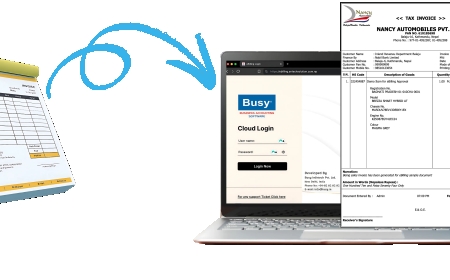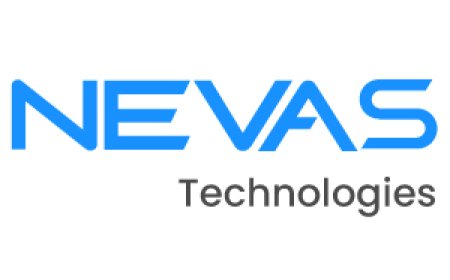Volunteer Management Software: The Unsung Hero Behind Nonprofit Impact
Volunteer Management Software: The Unsung Hero Behind Nonprofit Impact
In the ever-evolving landscape of nonprofit work, efficiency and engagement are not optionalthey're essential. As organizations strive to do more with less, especially in the wake of increased social demands, Volunteer Management Software has emerged as a silent force powering mission-driven impact. It's not just a tech upgrade; it's a transformative tool that touches every aspect of nonprofit operationsfrom recruitment to retention, reporting to relationship-building.
Nonprofits that rely heavily on volunteers understand the challenges: fragmented communication, missed schedules, untracked hours, and overwhelmed coordinators. With volunteers often being the backbone of service delivery, a lack of structure can derail even the most passionate missions. Thats where Volunteer Management Software steps inoffering structure, scalability, and sustainability. But its not enough to just purchase a system. Successful implementation is what truly turns the software into a catalyst for meaningful change.
Bridging the Gap Between Purpose and Productivity
For any nonprofit, aligning organizational goals with volunteer activities is a continuous juggling act. Often, the desire to create community impact is hampered by outdated systems, manual processes, or inconsistent engagement strategies. Volunteer Management Software serves as a bridgeconnecting passionate individuals with purposeful action through a well-oiled digital interface.
When thoughtfully implemented, this software becomes more than a data repositoryit evolves into a real-time command center that boosts volunteer satisfaction, streamlines communication, and automates logistics. It eliminates silos between departments, integrates with calendars, sends reminders, collects feedback, and tracks performance. In essence, it allows staff to focus on community building rather than admin overload.
But for this to happen, organizations must go beyond viewing the software as a mere tech solution. It requires a strategic approach that starts with understanding internal needs, aligning with long-term goals, and engaging stakeholders from day one.
The Art and Science of Implementation
Implementing Volunteer Management Software is both an art and a science. It's not just about onboarding a new platform; it's about reshaping workflows, redefining metrics, and re-engaging people. The process involves careful planningfrom evaluating software capabilities to piloting the system with early adopters, training staff, and integrating with existing tools.
Social Roots highlights a particularly comprehensive approach to implementation, which includes assessing current volunteer management processes, identifying pain points, and mapping them against software features. This ensures that the tool doesn't just replicate inefficiencies in a digital format but genuinely transforms how volunteer programs operate.
Moreover, Social Roots emphasizes involving volunteers in the implementation journey. Why? Because a system built for volunteers must be intuitive to them. Gathering feedback during pilot phases, simplifying user experiences, and offering personalized training creates a culture of adoption rather than resistance.
(Read more about this thoughtful approach to implementation in this internal guide on Volunteer Management Software).
Data-Driven Engagement: Turning Insights into Action
One of the most underrated benefits of modern Volunteer Management Software is its data analytics capability. Every click, shift, signup, and feedback form becomes a data point that can be transformed into strategic insight. From identifying top performers to predicting no-shows, or understanding what types of events attract the most engagementdata becomes a guiding light for decision-making.
This empowers coordinators to tailor volunteer experiences, enhance retention strategies, and allocate resources effectively. Data can also be critical when reporting to donors, boards, or grant funders, showcasing tangible outcomes tied to volunteer efforts. With real-time dashboards and customizable reports, software like the one offered by Social Roots ensures that nonprofits no longer operate in the dark.
As Social Roots notes in its blog, effective implementation ensures that your organization captures clean, meaningful data from the startsetting the foundation for continuous improvement and long-term impact.
Empowering Volunteer Journeys with Personalization
In todays digital age, volunteers expect the same level of personalization and convenience they experience with consumer apps. Volunteer Management Software can deliver just thattailoring opportunities to skill sets, availability, and interests. It can automate thank-you notes, remind them of upcoming shifts, celebrate milestones, and offer them a clear view of their impact.
A well-implemented platform doesnt just assign tasksit cultivates relationships. It creates a sense of belonging, recognizing volunteers not just as labor but as integral parts of the organizations story. Features like self-service portals, mobile access, and interactive profiles make the volunteer journey engaging and seamless.
Social Roots implementation strategy prioritizes these volunteer-facing experiences. Their user-centric approach ensures that both backend efficiency and frontend satisfaction are baked into the setup process.
Future-Proofing Your Mission
The nonprofit world is changing fast. Social challenges are increasing, volunteer expectations are evolving, and funding sources demand accountability. In this climate, having a reliable, adaptable, and future-ready Volunteer Management Software is no longer optional. It is a strategic necessity.
What sets successful organizations apart isnt just the software they chooseits how they implement, adapt, and scale it. By choosing partners like Social Roots, who offer robust implementation frameworks and ongoing support, nonprofits can ensure that their software evolves with their mission, not against it.
As you plan for the future, remember: volunteer energy is abundant, but it needs direction. With the right system in place, you can harness that energy into unstoppable momentum.
Conclusion: The Digital Backbone of Compassion
At its core, Volunteer Management Software is a digital backbone for compassion in action. It ensures that no opportunity is missed, no volunteer is left behind, and no hour of service goes unmeasured. But like any powerful tool, its impact depends on how it's wielded. With strategic implementation, a focus on people, and a commitment to continuous improvement, nonprofits can turn their operations into engines of social change.


































